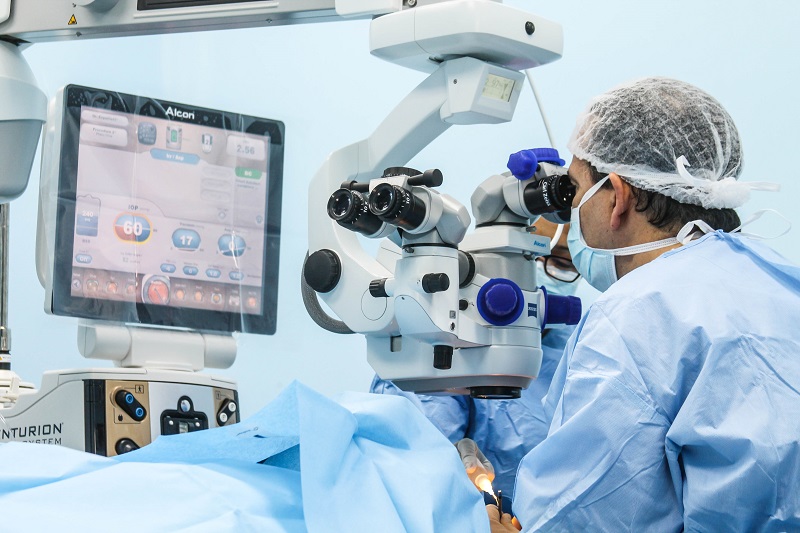- 12 de January de 2020
- Posted by: adtusalud-admin
- Category: News

Cataract is the name that the lens receives – the natural lens we have inside the eye – when it becomes opaque. It is located behind the pupil and functions as the lens of a camera, allowing the passage of light and focusing the images on the retina, which in turn sends them to the brain, where vision is produced. To perform this function optimally, the lens must be completely transparent.
Symptoms
The most common are:
- Blurry vision
- Double vision
- Perception of opaque or yellowish colors
- Difficulty seeing at night
- Presence of halos in night vision
- Photophobia (discomfort caused by light)
- Need more light to read
- Need for frequent changes in prescription glasses or contact lenses
- Improved near vision for no apparent reason
Causes
Age is the most common cause of the onset of cataracts, being normal that they occur after 60 years
Other factors are:
- Genetic conditioning
- Trauma
- Eye or body diseases, such as diabetes
- The consumption of certain drugs, such as steroids
- Overexposure to the sun without using glasses with ultraviolet (UV) protection
- It can also be congenital, that is, it occurs from birth.
Treatment
The definitive treatment for cataract remains surgical. This procedure consists in the extraction of the opaque lens, replacing it with a last generation artificial intraocular lens (IOL), which can have different focusing capabilities in terms of far, medium and / or near vision.
Intraocular Lenses
Traditional IOLs can induce small optical imperfections called higher order aberrations, which can affect the quality of vision, especially in low light conditions. Aspherical lenses, advanced technology, are more similar to the shape and optical quality of the natural lens of the eye, so they can provide a sharper view:
Toric lenses that correct astigmatism, in addition to farsightedness and myopia.
Trifocal aspherical intraocular lenses that correct presbyopia, that is, the patient will be able to see at a distance, in intermediate and near vision, without having to wear glasses or glasses (or wear them on the minimum of occasions) after surgery.
Femtosecond laser *
The most advanced technique used in cataract surgery is the femtosecond laser, which allows you to customize the procedure to each patient’s eye. Even when all human eyes share the same anatomical structure, each eye varies in terms of size, depth, curvature of the cornea and other key features, which is the reason why each eye must be carefully measured and mapped. With the use of the laser there is less inflammation in the intraocular tissues so that the visual recovery is faster.
The femtosecond laser allows a higher level of predictability and accuracy that usually cannot be achieved with traditional surgery.
Today we can achieve that after cataract surgery many people can see well without the use of glasses or glasses. However, in some patients there may be ocular reasons that require the use of glasses for very specific activities, and in very few cases, to wear them all the time after surgery.
Even when it cannot be prevented, cataract can be detected by eye exams. For this reason it is advisable to visit the ophthalmologist periodically.
Shorts:
- You can slow the advance of the falls using sunglasses with UV protection
- Thanks to advances in medical technology, cataract surgery is an outpatient procedure, fast and painless, with minimal risk and a speedy recovery
- Cataracts do not have to limit your lifestyle
- Consider cataract surgery when these prevent you from doing the activities you need or want
- Cataract surgery is one of the most frequently performed procedures worldwide
- There are no medications, exercises or special diets that prevent or cure cataracts
- Don’t let the falls limit your lifestyle



